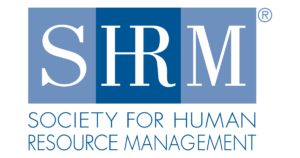The Foundations of a Leadership Succession Plan
It’s the circle of life, enterprise style.
Eventually, your managers, directors and even senior executives will have to hand the reigns over to the next wave of leaders.
It’s inevitable, much like death and taxes. However, the question is whether you should start recruiting externally or look in-house for talent that could step up to the plate. Although it’s not the answer in every situation, promoting internally has several advantages:
● New leaders are already familiar with your organization’s culture, priorities and goals.
● Subordinates may trust a familiar face more than an outsider.
● You can save on the costs associated with external recruitment.
● The transition process can begin earlier, facilitating a smooth transfer of knowledge.
● Career progression opportunities may assist with retaining valued employees.
To prepare new leaders and create a talent pipeline, organizations can take a strategic approach that begins long before leaders make their exit. A strong succession plan leverages reliable information about workers’ strengths, career ambitions and potential to prepare the next generation of leaders in anticipation of workforce changes.
The value of strong succession planning
Succession strategies serve as a linchpin in an organization’s ongoing success. According to the Institute of Executive Development (IED) and Stanford University’s Rock Center for Corporate Governance, a few tactical shifts could help many organizations more fully leverage the value of succession planning, turning it into a value-add process, instead of a reactive one.
The IED and Stanford University asked directors and executives at 20 enterprises about their organization’s leadership development strategies. Based on their discussions, they suggested enterprises take the following steps to bolster their plans:
● Correlate the skill sets required to run their organizations and the individuals capable of acquiring those abilities.
● Implement succession plans as ongoing and comprehensive leadership development initiatives, not just risk management measures.
● Connect talent management with succession planning, providing valuable insight into what sort of capabilities potential leaders could bring to the table.
Stanford’s David Larcker noted that strong leadership is critical to the long-term success of each organization, emphasizing the value of taking a holistic, integrated and proactive approach.
“Research shows that companies with sound succession plans tend to do better,” he said.
The foundations of a successful succession plan
Succession plans are driven by information regarding an organization’s direction, operations and workforce. Developing leadership preparation programs can be broken down into a three-step process:
1. Assess objectives that will lead to the organization’s future success. Deloitte noted that understanding which elements support their organization’s continuity helps stakeholders identify the best way forward.
2. Determine how the organization can adjust operations, reposition investments and establish processes to achieve predefined goals. Executives should also observe how an organization’s culture influences day-to-day transactions, as attitudes and perspectives impact employee commitments.
3. Identify talent capable of nurturing endeavors that will lead to the organization’s success. This goes beyond measuring each worker’s performance, also pinpointing which prospects are capable of meeting future needs.
Once decision makers reach the last step, they can take calculated actions to mentor, train and develop the leaders they’re looking for. Organizations should take employees’ career goals into consideration, holding conversations from early stages and investing in their professional development. This kind of commitment and communication also increases employee engagement and retention.
Beyond leadership development
Although there are natural-born leaders in the professional landscape, some individuals may not have the background and experience of outside candidates, but do have the potential to learn and thrive. A talent analytics solution may identify these prospects, enabling the current leadership to take them under its wing.
Succession planning lays a firm foundation for a strong future. But its value can be felt both now and in the future. A robust, comprehensive approach that develops staff and recognizes strong performance also inspires confidence and job satisfaction, raising the potential of the workforce as a whole and retaining key talent. As such, the right data and tools can be incredibly powerful agents of meaningful, lasting change to invigorate the entire organization…while preparing for those leadership changes.
Read full article
https://blog.shrm.org/blog/the-foundations-of-a-leadership-succession-plan


